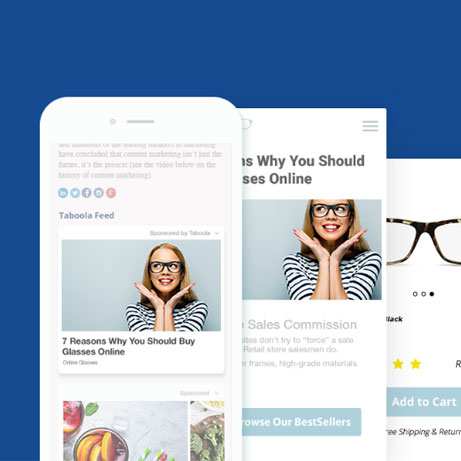Small Biz Lab: Testing Website Navigation

 Of all the elements that can be tested on a website, few are more important than testing the efficiency of your navigation elements.
Of all the elements that can be tested on a website, few are more important than testing the efficiency of your navigation elements.
Navigation is an essential element of the Web, capable of providing a vastly improved experience for users and influencing several key performance indicators. While it may not be as exciting an element to test as pricing, it does carry major influence on creating a meaningful interaction for Web users and a profitable one for your Web enterprise.
Information portals and ecommerce sites are those that may benefit most from testing navigation. Groups or individuals focused exclusively on landing page optimization should certainly be concerned with and consider testing navigation, but when the notion of "conversion" rules the focus of every page, calls-to-action and other elements (e.g. imagery) that aid in the conversion process often take precedence. However, navigation should never be an afterthought, as it is an element that can undoubtedly move users closer to the end of the sales funnel, even from a very specific landing page.
Informed, Educated Testing
Depending on your website's audience, understand that the navigation menu experience will change dramatically from site to site. You may find with a younger, hipper audience that users will prefer rollover menus but detest autoexpanding menus. You may find with far older audiences that text-style menus outperform Flash and hyper-sensitive flyout menus. While you can certainly make some broad guesses as to what will perform best, only testing will ensure the best experience for your audience and, therefore, the best opportunities for conversion.
Commit to Testing
Users must be able to easily find their way through a website from every page, ultimately reaching the information they want or need quickly. It's hard to take a different point of view. When testing, both designers and site owners must understand users' expectations of their website navigation. Finding a way to provide easy access to what users want (and with fewer clicks) when designing website navigation and structure will improve the information-seeking experience and make a positive impact on key performance indicators like time-on-site and bounce rate - important factors in everything from advertising metrics to SEO. The point is, even if you're not committed to running elaborate tests on navigation, do recognize the importance of helping users get what they want.
How to Test Website Navigation
If you are committed to testing navigation but have not yet, selected a vendor (and don't want to run manual tests) know that there are a variety of site testing tools available.
Forrester's recently published report on online testing platforms reviewed the top nine players in the space which included Adobe Test & Target, Amadesa Customer Experience Suite, Autonomy Optimost, Google Website Optmizer, Maxymiser Content MVT, SiteSpect, Vertster Conversion Optimization Suite and Webtrends Optimize. Forrester indicated that Adobe Test & Target (formerly Omniture) and Autonomy Optimost were placed as the leaders - Adobe Test & Target excels in overall application usability, customer satisfaction and content support, while Autonomy stands out in administration, deployment options and breadth of testing techniques.
While free site testing tools such as Google Website Optimizer are attractive to many, other Web professionals demand more and these commercial vendors all provide competitive and effective solutions. Know in advance, however, that investing in any testing platform can be costly and time consuming. The cost of experimenting often depends on the amount of traffic pages receive, the complexity of experiments and, in some instances, the difference in conversion rates for your combinations. As such, know how these site testing vendors charge for their services and, based on your own needs, determine if using their services is necessary or warranted.
With a little virtual elbow grease and some organization you can test navigation elements without these vendors, over time, to the same effect.
What to Test
Once it has been determined how you will test your website's navigation (manually or by using a testing service), it is time to decide what you will be testing. A few of the more meaningful options you can select from the start include location, descriptions and functionality.
Location -Web users are an impatient lot, and they will not spend time on your site if they can't find what they want. As such, navigation should be a prominent element of your design. But what is the optimal location for navigation? Only testing will reveal the answer.
The most common location for primary navigation is horizontally, across the top of the page. The advantage of using navigation elements in this location is that it provides additional room for content and other relevant information about products and services. By not forcing visitors to scroll down to navigate further into your site, the result might ultimately be increased page views and time-on-site. Keep in mind that should you opt to use graphics in the header of the page, consider testing navigation above and below the primary graphic. Navigation design trends today often include primary navigation bundled with images and calls to action, but providing a simple navigation path should still be tested.
While horizontal navigation is quite common today, that has not always been the case - it used to be that left-of-page navigation was the most common location. As design has matured and evolved, navigation location has increasingly taken on new forms and should be audience-appropriate.
TEST THIS: When it comes to the location of navigation elements, consider testing new areas entirely (right-hand or left-hand navigation) or testing the presence of secondary navigation elements in various locations around the page (the footer, for example) to determine if the presence increases page views or sales.
Descriptions - A website's section names, particularly as labeled in the navigation, should clearly state what the user can expect after the click. General words like "resources" or "tools" are far too ambiguous and should be avoided. Using generic terminology tends to lead users to wander, and away from the conversion path we have set forth.
TEST THIS: Test reducing or increasing the amount of text in primary navigation. Depending on the makeup of the audience, they may need more or less descriptive text - you won't know unless you test. Best practice guidance teaches us to settle on four to six primary sections of your website (and thus silo-ing existing content under these channels) and to focus on the naming conventions (keywordrich, of course) of those navigation links. This will offer users faster, more accurate access to the information they want.
Functionality - As important as where you place your navigation elements and the clarity of the text individual navigational links provide is the functionality of the navigation menu itself. Web designers have a variety of options available to them when it comes to navigation functionality - from mouseover effects to dropdowns, to nested menus and more. For some ideas, look into Javascript libraries such as jQuery, Mootools, prototype or script.aculo.us.
TEST THIS: Testing the functionality of your navigation will yield results. What should be tested is how certain effects impact key performance indicators, such as page views. Consider tracking how users interact with different navigation functionality by recording their visits - two services to consider include Click- Tale.com and Mouseflow.com.
Start Testing Today
Designing for users is important. Web designers need to provide visiting audiences with what they expect in a clear and compelling manner. The battle line is navigation. While the attraction toward using elaborate or intricate navigation is understandable, the goal is always to provide users with access to the information the website provides. Users do not have the patience or time to learn more intricate navigation, so focus on creating an experience that is both instinctive and natural. Complicated and difficult-to-use navigation makes users feel uneasy and apprehensive about a website and will negatively influence conversion. So start testing navigation today and find out what works for your audience.











